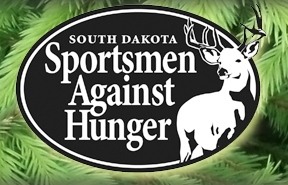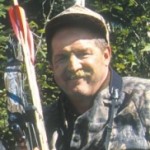 By Bill Vaznis, Editor of Bear Hunting Magazine
By Bill Vaznis, Editor of Bear Hunting Magazine

5-inch front pad tracks.
The site intrigued me. It was situated at the confluence of two streams, a natural crossing for black bears, and well off the beaten path. It was also dark under the canopy of spruce and fir, even on a bright sunlit day, which gave me the willies whenever I replenished the bait. Indeed, the five-inch front pad tracks in the nearby mud indicated a mature boar was raiding my cache of meat and pastries every other night or so, and the last thing I wanted to do was to come face to face with him in the poor light.
I hung a portable stand crosswind to the pile of logs covering the bait after one of his visits, and even though I was anxious to loosen an arrow, I waited for the bear to get used to the new set-up before climbing on board.
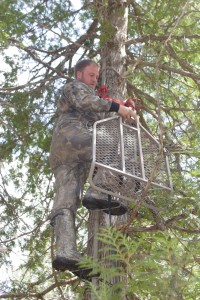
Portable tree stand.
It was the right decision, for the first night I hid aloft, the big bear circled cautiously downwind of the bait site, and once satisfied all was safe committed himself to the offering just before dark.
I waited for him to present a quartering away shot, and when he did, I came to full draw, aimed and released a vaned shaft at his vitals in one fluid motion. The Pope & Young bruin let out a deafening roar upon impact, and immediately fled the scene with his stubby tail tucked between his legs like a scalded dog. His efforts were to no avail however as he was already dead on his feet expiring less than fifty yards from my stand.
LOCATION, LOCATION, LOCATION!
Baiting remains the most popular bow-hunting method for black bears, and accounts for more entries in the various record books than stalking, tracking, still-hunting, calling and running ‘em with dogs combined.
But setting up a proper ambush is not so easy a task. For openers, black bears are secretive creatures of the deep woods and dark swamps. Even in farm country, they seem to thrive on the edge, padding carefully about those nasty hard-to-reach tangles of brush, boulders and fallen snags. Oh, you will see them feeding in the wee hours along the edges of clear-cuts, open meadows and wind-swept ridges, but their daytime lair will most always be in the thickest and most impenetrable cover available. Even when on the prowl for food or mates, black bears, and especially big boars, choose routes that offer them the most protection.
Nonetheless, it has been said that enticing a bear to a bait site is not a difficult task. Indeed, try hiding a cooler of meat or a couple bags of groceries in bear country, and see what happens! It shouldn’t take more than a couple of days or so for a bear to find your goodies, and devour them without so much as a “by your leave”.
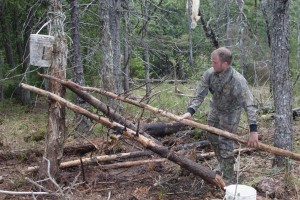
Bait site.
What is difficult however is meeting that bear at your bait site during legal shooting hours. Big boars are smart, very smart, and that means you have to plan your ambush well ahead of time. A bag of pastries tossed on the shoreline may attract a roaming bear, but there is no guarantee that he will give you a clear shot unless you pay close attention to all the details.
When bears emerge from their dens in the spring, it takes their digestive tracts a while to adjust to the long period of hibernation. Red meat, carrion and even fish are often just too much for their system to handle. Spring greenery in the form of new shoots, green grasses, clover and the buds, leaves and catkins of the aspen tree are a few of the important foods bears seek out now. Where else might you find a hungry spring bruin?
• Water and sunshine promote the season’s first greenery. Look for tracks and scat along the edges of rivers, lakes and other large bodies of water.
• Stream banks, especially where thick brush and uneven terrain make it difficult for humans to walk, are natural travel lanes for mature boars.
• Bears always check out the confluence of two streams, where a river and a stream meet or where moving water enters and exits a lake or pond.
• Bears routinely patrol the edges of swamps. Expect increased activity along any ridge or finger of land that leads in or out of the swamp.
• Look for claw marks on the trunks of aspens, and “bear nests” in the upper most branches, for signs of early spring feeding.
• In an effort to help hold the soil near construction projects, managers often plant clover. Look for this much preferred delicacy near the edges of forest service roads, logging roads in and around re-claimed clear-cuts and along gas lines, maintenance roads and well heads. Power lines, gas lines, underground communications lines and other rights-of-ways are another area worth a careful look-see in early spring.
• If you are not sure when the bear is hitting your bait, affix a timer to one of the entrance or exit trails. You may learn that the bear is chowing down right after you leave for the evening, or that he is more nocturnal than you thought, feeding after midnight. On rare occasions, a big bear may also feed at first light.
Stay tuned for Part Two!
3,402 total views, no views today
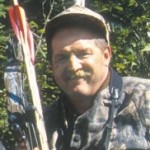



 By Bill Vaznis, Editor of
By Bill Vaznis, Editor of 


